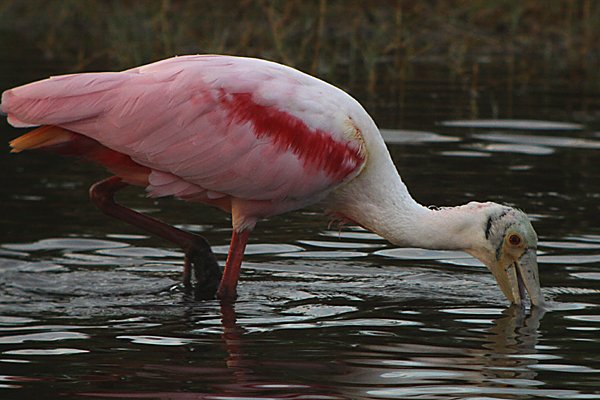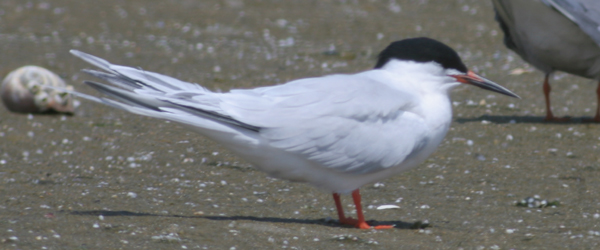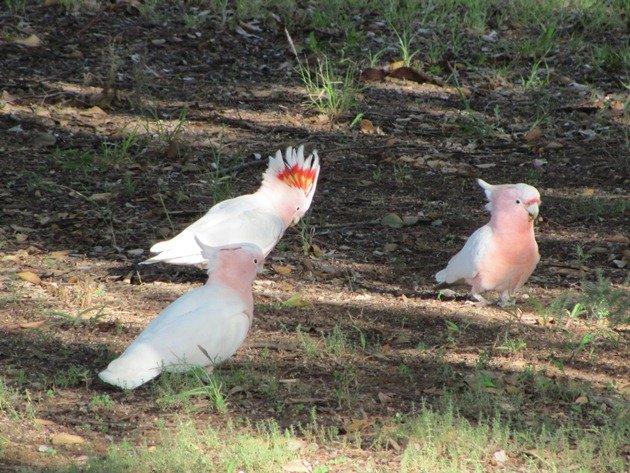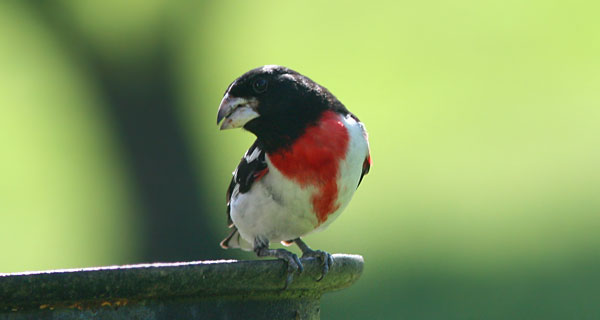
Ah rose, the color of swanky gardens and rampant optimism. Rose by any other name also appears prominently in the plumage of some very perky birds. Rosy, a proper adjectival form of the word, describes a selection of finches from the genus Leucosticte. Of the four rosy finches, lovely earth-toned birds anointed with stark pink around the wings and lower parts, three (Grey-crowned, Black, and Brown-capped) are found in the western United States. The Asian Rosy Finch is found, well, elsewhere.
The Rosy Finches are hardly the only rosy birds around. Africa’s Rosy Bee-eater is vivid enough to burn your retina while the Rosy Pipit of Asia flaunts but a flush of pink. This color also describes minivets, starlings, and thrush-tanagers, as well as the bill of a particular pochard, the face of a sweet little lovebird, and the patch and throat of a bush-shrike and longclaw respectively.

Rosy Bee-eater by Adam Riley
If one is feeling fancy, the term roseate can be used to describe this cheerful hue. Only two bird species have been so honored and both can be spotted on the east coast of North America, though usually not in the same spot. The Roseate Spoonbill is a sensational, salmon wader whose vibrant color stems, as in the flamingo, from crustaceans in its diet. The Roseate Tern, on the other hand, shows merely a tinge of rose on its belly.

Tough to see the rose in the Roseate Tern!
Some birds are neither rosy nor roseate but just plain rose. The Rose Robin of Australia, sometimes referred to as the Rose-breasted robin, is considered the most acrobatic of a group of red robins. Rose also adorns the anatomy of certain buntings, becards, chats, fruit-doves, parrots, parakeets, pihas, and tangers, tropical birds all. I’m quite partial to the Rose-breasted Grosbeak, whose magenta bib attains an almost preposterous purity of hue.
Rose is generally accepted as a shade of pink, though it often gets lumped in with red, magenta, or even violet. So, one could call it rose, rosy, roseate, salmon (see the Salmon-breasted Cockatoo,) or even coral, if describing the bills of specific scimitar-babblers, ground-cuckoos, or nuthatches but pink serves just as well. In fact, pink evokes a certain sense of exoticism when applied to plumage. The beauty of the Pink Pigeon of Mauritius is matched only by its rarity. The Pink Cockatoo, Major Mitchell’s own bird, is equally lovely, possessed of soft white and roseate feathers with bright red and yellow markings on its crest. Those red robins of Australia even include a Pink Robin in their ranks. Pink is the color of imperial pigeons, of fruit doves, of exotic pelicans, parrotfinches, and puffbacks. Even a goose sounds special if it has pink feet.

Major Mitchell Cockatoos by Clare Morton
A rosy future is one deemed bright or promising. I’d consider a future that heralds any of these birds rosy indeed.
…
 It is Pink Bird Weekend on 10,000 Birds! Whether we are discussing birds shaded roseate, fuchsia, rose, coral, salmon, blush, or just plain pink, we have them all covered on Pink Bird Weekend. Why would we bother with such an esoteric topic? To put it simply, pink birds are awesome! Think about it, have you ever seen a pink bird and not wanted to see it again? Of course not! Make sure to check back all Pink Bird Weekend long as we delve into every possible pulchritudinous pink bird we can think of…
It is Pink Bird Weekend on 10,000 Birds! Whether we are discussing birds shaded roseate, fuchsia, rose, coral, salmon, blush, or just plain pink, we have them all covered on Pink Bird Weekend. Why would we bother with such an esoteric topic? To put it simply, pink birds are awesome! Think about it, have you ever seen a pink bird and not wanted to see it again? Of course not! Make sure to check back all Pink Bird Weekend long as we delve into every possible pulchritudinous pink bird we can think of…












Leave a Comment